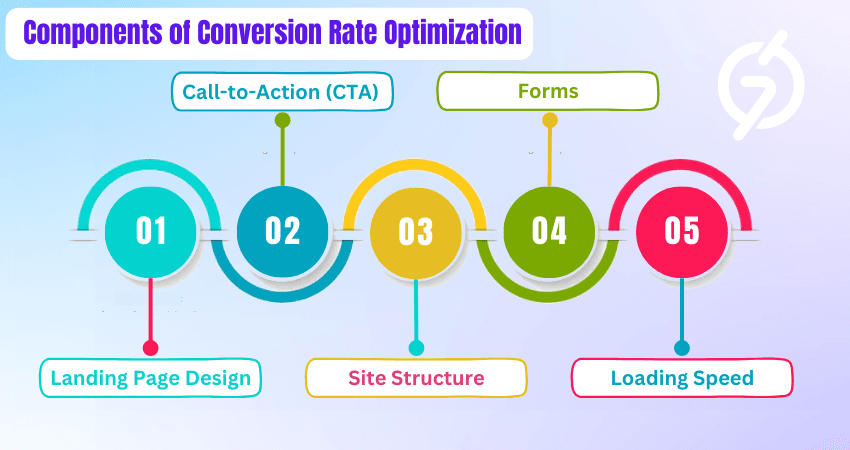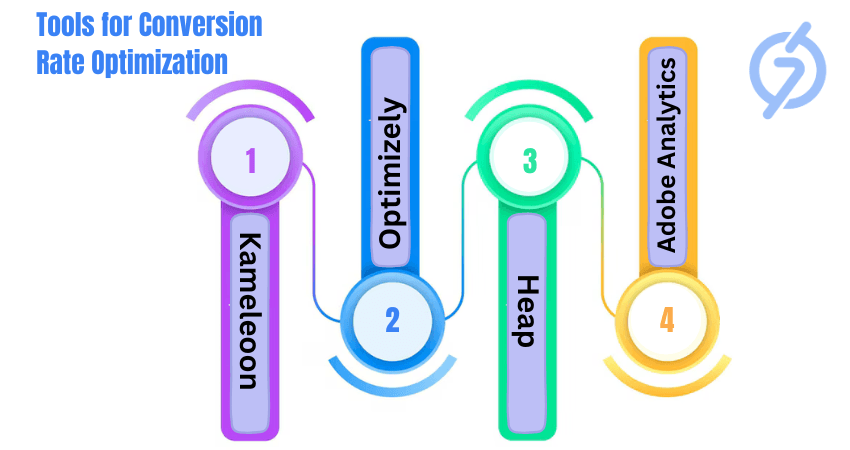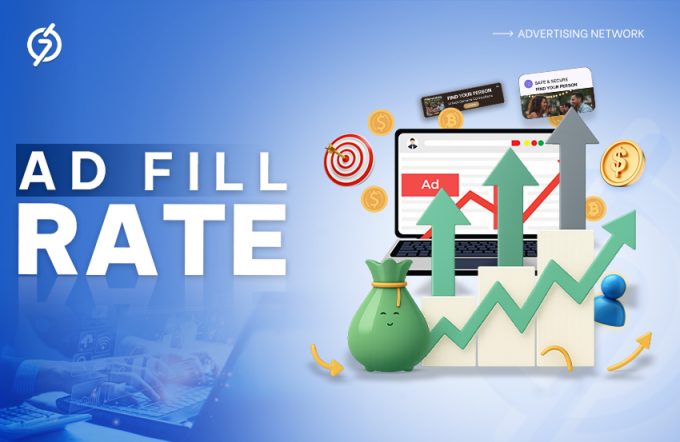Do you know what the first step is when looking for conversions? The first step is to attract high-quality traffic from various ad networks or other traffic sources. The real game begins when that traffic converts into meaningful actions—purchases, sign-ups, or leads. This is where conversion rate optimization (CRO) emerges as a real savior for business owners.
Imagine you’ve got thousands of visitors, but only a few convert into customers. Sounds frustrating, right? It does not only sound, but in practice, it really is. That’s the reality many businesses face. Simply attracting traffic isn’t enough if your site isn’t optimized to turn visitors into valuable clients.
CRO is the process of improving your website’s design, content, and user experience to maximize the number of visitors who take meaningful action, such as making a purchase or signing up for a newsletter.
By implementing CRO strategies, you can increase your website’s revenue without spending more on digital advertising or marketing.
If you want to gain more knowledge about conversion rate optimization, you are in the right place. In this blog, we’ll share some easy tips to help increase your sales. It’s time to jump in!
Conversion Rate Optimization: The Secret Ingredient for Business Growth
CRO is important for you, but before we discuss that, let’s understand what conversion means for a business. It means an action a user takes that meets a business goal. This could be anything that matches the objectives of business owners. Now, move towards the conversion rate optimization.
CRO is about making a website better so more visitors do what you want or desire, like:
- Buying a product
- Subscribing to a service
- Requesting a quote
Various businesses have different goals, all of which can be achieved by focusing on Conversion Rate Optimization. This process involves analyzing user behavior, making changes to the website’s design or content, and testing different strategies to find what works best. The end goal of conversion rate optimization is to convert more visitors into customers or solid leads.
Is Conversion Rate Optimization Really Important?
Yes, CRO is crucial for any business, especially those operating online. Here are a few reasons why it matters:
Maximizes Revenue
CRO helps businesses earn more money from their existing visitors. By improving the way a website or landing page works, CRO encourages more visitors to take the desired action.
This means businesses can make more sales without needing to attract additional visitors by paying more for online ads. With a higher conversion rate, the same amount of traffic can generate significantly more revenue and also improve SEO.
Minimizes Customer Acquisition Costs
As we discussed in the previous point, Conversion rate optimization helps reduce the cost of getting new customers. When you optimize your website to convert more visitors, you don’t have to spend as much on advertising or marketing to attract new users.
Instead of focusing solely on bringing in new traffic, you can make the most of the visitors you already have. This efficiency in spending means your marketing budget goes further, which allows you to invest in other areas of your business.
Reduces Bounce Rate
A well-optimized site can lower the bounce rate, which is the percentage of visitors who leave after viewing just one page. By optimizing the content, layout, and user experience, CRO keeps visitors engaged and encourages them to explore more pages.
This is important because a high bounce rate can signal that users aren’t finding what they need. Lowering the bounce rate means more users are sticking around, which increases the chances of conversions, and all business owners want that.
Improves User Experience
Business owners create websites for their targeted audience. The objective is to ensure that the customer can easily visit, purchase, or take desired actions without encountering any obstacles. If the user experience is poor, users might turn to other sites with similar offerings that are more user-friendly. You wouldn’t want that, right?
CRO focuses on creating a better experience for visitors to your site. By analyzing user behavior and feedback, brands can easily identify areas for improvement. A smooth and enjoyable experience—like fast loading times, easy navigation, and a clear action button—keeps visitors happy.
When users find it easy to interact with a site, they are more likely to attempt and complete desired actions, which ultimately leads to higher conversion rates.
Helps in Making Data-Backed Decisions
Conversion Rate Optimization helps you make data-backed decisions to improve your website’s performance. Data plays an important role in most stages of business. For example, when choosing the best elements or the overall design of the website, we always keep in mind previous data and user feedback.
CRO offers key metrics like conversion rates, bounce rates, and click-through rates (CTRs) so you can understand how users interact with your platform. This data helps you identify areas that need improvement.
Conversion rate optimization also includes qualitative research methods, such as heatmaps and user surveys, which offer valuable insights into user behavior and preferences.
By combining this quantitative and qualitative data, you can make even better decisions than before.
How to Accurately Determine Your Conversion Rate
The conversion rate shows how well a website or ad turns visitors into customers. It’s a percentage that helps you understand the effectiveness of your marketing and conversion rate optimization efforts.
Here’s how to calculate it:
Formula:
Conversion Rate = Total Number of Successful Conversions / Total Number of Visitors X 100
Steps to Calculate:
Step 1 (Count the Conversions): The total number of people who completed the desired action.
Step 2 (Count the Total Visitors): The total number of visitors who enter your website or landing page during a specific period.
Step 3: (Use the Formula): Plug the numbers into the formula to find the conversion rate.
Example:
Let’s say you run an online store and have 1,000 visitors during a month. Out of those, 50 people make a purchase. At the end of the month, you calculate the conversion rate.
We have 50 conversions (who bought something), and the total number of visitors is 1000. Now, plug these numbers into the formula:
Conversion rate = 50 / 1000 X 100
Conversion Rate = 5%
So, your conversion rate is 5%, which means that five out of every hundred visitors made a purchase.
Crucial Components of Conversion Rate Optimization
CRO is not based on a single component but on multiple factors. As a website owner, you need to keep an eye on all the given components to achieve a good conversion rate:

Landing Page Design
Landing pages are designed to direct visitors toward a specific action, like signing up or making a purchase. By removing distractions, they help visitors focus on the main goal. We researched whether one landing page is sufficient for conversion or if more are needed.
Our findings show that businesses with more than 40 landing pages generate twelve times more leads than those with only a few landing pages, like 1-5 (source: HubSpot).
To create a successful landing page:
- Start by defining the action you want visitors to take.
- Write a clear value proposition and a strong call to action.
- Make sure the design is engaging and delivering the right message to the right user.
Call-to-Action (CTA)
A CTA is a button that directs your visitors to the final stage, where they can complete their action or fulfill the business owner’s objective by clicking it. In short, it encourages website visitors to take specific actions.
We have another amazing finding related to CTAs. We researched that personalized Call-to-Action, based on user data, can increase conversion rates by 202% compared to generic ones (Source-HubSpot).
To optimize your CTAs:
- Use bright colors and strategic placement to grab attention.
- Write unique but meaningful short phrases and consider adding countdowns to encourage immediate action.
- Customize CTAs for various visitor segments to meet their unique needs.
Site Structure
A website has many categories, subcategories, and features. As website owners, we need to focus on making things simple for our visitors. When users get confused, it directly harms conversion rates. That’s why we believe that website structure and navigation are important components of conversion rate optimization.
Having a clear website structure and easy navigation is essential for improving conversion rates. A well-organized layout helps users find what they’re looking for quickly. When visitors can easily move from the homepage to different categories, they are less likely to get frustrated and leave the site.
Reducing the number of clicks needed to reach important sections improves the user experience, encouraging users to stay longer and complete actions like making a purchase or signing up. This ultimately helps increase conversions and build trust in your brand.
Forms
Forms are very important in a company’s sales process and can have a big impact on conversion rates. There are many ways to create effective forms, but not all methods work the same. Some situations need longer forms, while others work better with shorter ones.
The key is to find the right balance between getting good leads and having a good number of submissions. To optimize forms effectively, you should adjust your approach based on what your business needs to get valuable leads and improve conversion rates.
Loading Speed
Loading speed refers to how quickly a webpage appears after a link is clicked or a page is refreshed. It’s really important for a website to load quickly because visitors usually leave if it takes too long—often just a few seconds. If a page is slow, more people will bounce away, which means they won’t stay to check it out or make a purchase.
To make a page load faster, you can reduce image sizes, eliminate unnecessary code, and use good hosting services. A quicker page provides a better experience and can help convert more people.
Amazing Tools for Conversion Rate Optimization
Here are some amazing tools for CRO that can help improve your website’s performance and increase conversions:

Kameleoon
Kameleoon is a powerful CRO tool that helps businesses improve their website performance. It uses artificial intelligence (AI) to show personalized content to each visitor, making it more relevant and interesting.
This can boost conversion rates and increase sales. Kameleoon also takes data security seriously, keeping customer information safe. With its user-friendly interface and collaborative features, Kameleoon is a valuable asset for any business owner looking to optimize their website’s conversion rate.
Optimizely
The next conversion rate optimization tool is Optimizely. It is a useful tool for CRO that truly gives you an amazing experience because it lets you test web pages, content, and features to gather helpful insights.
It also provides eCommerce experiences, making it great for businesses to improve customer engagement. This platform is designed for developers, marketers, and content creators, helping them manage the entire marketing process. Optimizely makes it easy to run experiments and improve campaigns with its all-in-one features.
Heap
Heap, now part of Contentsquare, is a product analytics tool that shows how users connect with your website or app. It automatically tracks actions like page views, clicks, form submissions, and purchases without needing to set up custom events like on GA4.
With Heap, you get useful insights into user behavior, helping you improve your site and increase conversions. This tool makes it easy to analyze data and make smart, user-based decisions for your online business.
Adobe Analytics
When it comes to making a list of top conversion rate optimization tools, a popular name that stands out is Adobe. It offers Adobe Analytics, which is a great tool for improving conversion rates, especially for large businesses. It helps track important business goals and KPIs by combining important data from:
- Websites
- Marketing
- Prediction
This tool collects information from many channels, which is why it successfully delivers a complete view of customer behavior. It also works with your CRM, making it easy to create user segments and run tests to improve results.
Conclusion
Conversion Rate Optimization (CRO) is an important part of the business journey. In this blog, we have discussed CRO and its important components. These include your landing page design, call-to-action buttons, website layout, and loading speed.
We understand how focusing on these components increases conversion rates, makes more money without spending extra on ads, and lowers bounce rates. Tools like Kameleoon, Optimizely, Heap, and Adobe Analytics can give you important information about how people behave on your site. So, why not start conversion rate optimization today? Even small changes can lead to big growth for your business!
Frequently Asked Questions (FAQs)
What is conversion rate optimization (CRO)?
Ans. CRO is the process of improving your website’s design, content, and user experience to maximize the number of visitors who take meaningful actions, such as making a purchase or signing up for a newsletter.
What are the main components of Conversion Rate Optimization?
Ans. Landing page design, call-to-action (CTA), site structure, forms, and loading speed are the key components of CRO.
What are some popular Conversion Rate Optimization tools?
Ans. Kameleoon, Optimizely, Heap, and Adobe Analytics are some popular CRO tools.
Why is a good website loading speed important for Conversion Rate Optimization?
Ans. A good website loading speed is important because if your website takes time to load, then it might lead to a high bounce rate and low conversions.
What are some common Conversion Rate Optimization mistakes that businesses make?
Ans. Some common CRO mistakes include neglecting mobile optimization, not conducting user research, and failing to test different variations of your website.


















